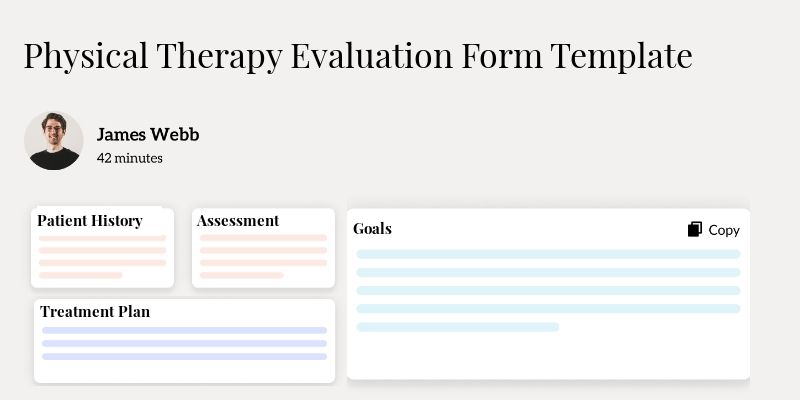
Physical Therapy Evaluation Form Template
Imagine walking into your first physical therapy appointment; you're probably anxious, curious, and hoping for the best outcome. The process seems daunting, but did you know behind the scenes there's a structured method to ensure each session is effective? Enter the Physical Therapy Evaluation Form Template—an unsung hero designed to structure, document, and elevate the quality of care you receive. So, what exactly makes this tool indispensable?
What Is a Physical Therapy Evaluation Form Template?
A Physical Therapy Evaluation Form Template is a structured document used during the initial assessment of a patient in physical therapy. It captures essential data to guide treatment plans and track progress.
This template includes various sections such as patient history, assessment results, and treatment objectives, all structured to create a comprehensive patient overview.
Key Components of a Physical Therapy Evaluation Form?
The components are critical for a thorough evaluation:
- Patient Information
- Medical and Treatment History
- Assessment Findings
- Treatment Goals
- Therapeutic Recommendations
- Progress Tracking
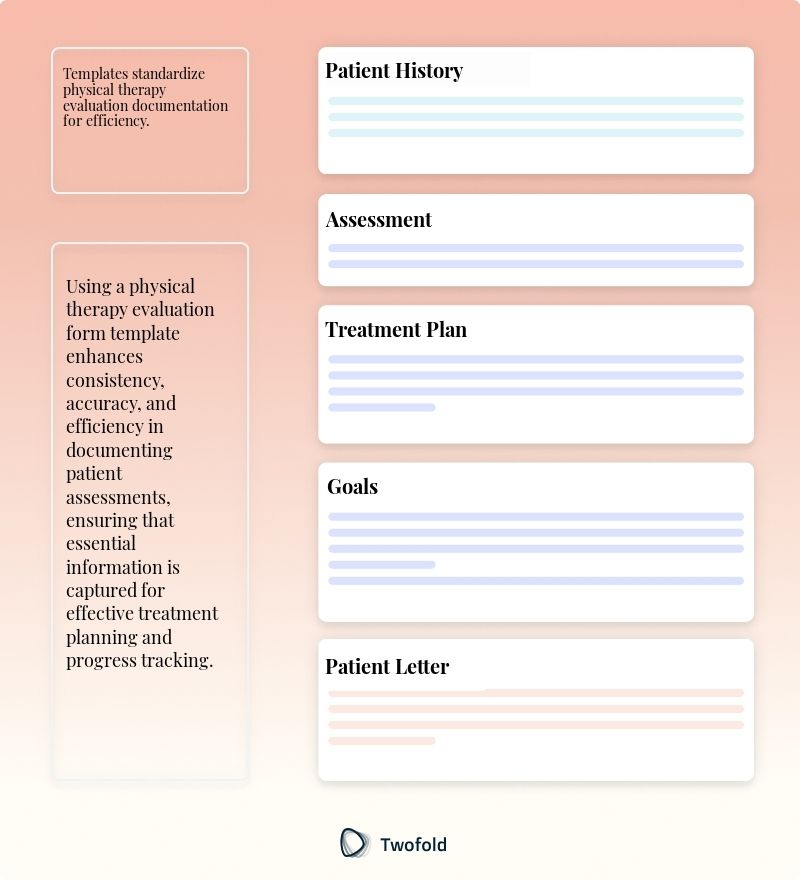
How to Use a Physical Therapy Evaluation Form Template: Step-by-Step Process
Step 1: Gather Patient Information
Record the basic personal details of your patient to initiate their medical record.
Step 2: Review Medical and Treatment History
Include past medical conditions, treatments, and relevant patient history for context.
Step 3: Perform and Document an Assessment
Conduct a physical examination and note the findings in a structured manner.
Step 4: Set Treatment Goals
Use the assessment data to define measurable and achievable goals.
Step 5: Recommend and Implement Therapy
List therapeutic recommendations that align with the evaluation.
Step 6: Monitor and Document Progress
Continually update the form to track patient improvements or alterations in the plan.
Benefits of a Physical Therapy Evaluation Form
Benefit | Description |
|---|---|
Structured Information | Ensures all critical patient data is captured accurately. |
Guides Treatment Plans | Facilitates the development of tailored treatment approaches. |
Tracks Patient Progress | Offers a historical overview of patient's therapy advancements. |
Insurance Compliance | Provides necessary documentation for insurance claims and coverage. |
Stakeholders in Physical Therapy Evaluation Forms
Various individuals rely on the information contained within these templates:
- Physiotherapists: Sara, a seasoned PT, uses the form to tailor sessions accurately.
- Patients: John finds clarity in understanding his treatment path through documented goals.
- Insurance Companies: A claims auditor ensures coverage aligns with documented care.
- Healthcare Administrators: Lisa oversees compliance with medical form requirements in her facility.
Example of a Physical Therapy Evaluation Form PDF
Having a PDF version offers a consistent, easy‑to‑distribute format that maintains the integrity of the documentation across various platforms.
Real-World Use Cases: Practical Impact of the Physical Therapy Evaluation Template
This template proves invaluable across numerous practical scenarios:
- During routine check-ins, Emily notices improved mobility in her patients and updates treatment goals accordingly.
- In a busy clinic, Michael cuts down on admin time by quickly filling out standardized sections while maintaining quality.
- Accurate forms prevent Janice from undergoing redundant tests, as previous data provides a clear health history.
- Tracey's comprehensive evaluation documents help her secure timely insurance authorizations for specialized care.
Conclusion
The Physical Therapy Evaluation Form Template is an indispensable tool for ensuring comprehensive and productive assessments. With clear and structured documentation, therapy sessions can adapt and evolve with the patient's growth. The consistency found in these forms not only supports the patient’s journey but facilitates effective communication among healthcare professionals, making it an essential tool in providing high‑quality physical therapy care.
Disclaimer: This article is for informational purposes only and does not constitute legal or medical advice. Always consult professional guidelines and regulatory bodies for specific compliance requirements.

Dr. Danni Steimberg
Dr. Danni Steimberg is a pediatrician at Schneider Children’s Medical Center with extensive experience in patient care, medical education, and healthcare innovation. He earned his MD from Semmelweis University and has worked at Kaplan Medical Center and Sheba Medical Center.
A PT evaluation sets the blueprint for recovery, so every field should translate straight into measurable rehab goals. The ALIGN checklist – Assessment findings, Limitations, Individual goals, Game‑plan interventions, Next review date – keeps the form concise, evidence‑based, and payer‑friendly.
- Assessment findings: Record objective tests, ROM values, and pain scores right next to the affected joint or region so baseline data are impossible to miss.
- Limitations and risks: List the top three functional deficits and any red flags (e.g., fall risk, post-op precautions) to justify skilled PT services.
- Goals and game-plan: Pair each SMART goal with the specific interventions you will use, then close the note with a firm re-evaluation date; this tight linkage satisfies insurance requirements and guides session priorities.
Frequently Asked Questions
Reduce burnout,
improve patient care.
Join thousands of clinicians already using AI to become more efficient.
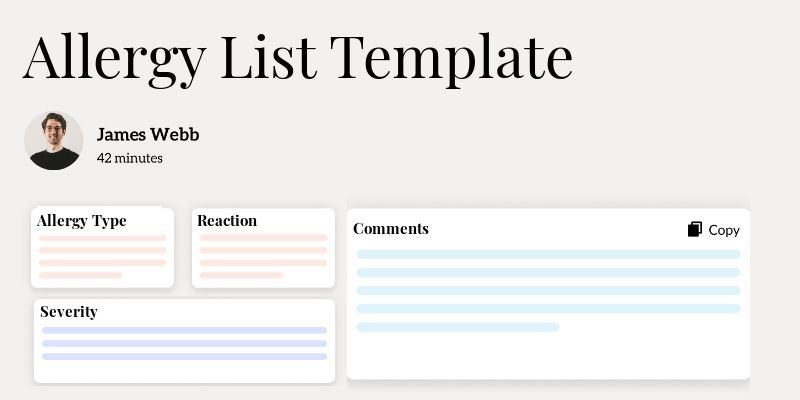
Allergy List Template
Discover practical Allergy List Template templates to enhance your documentation efficiency.
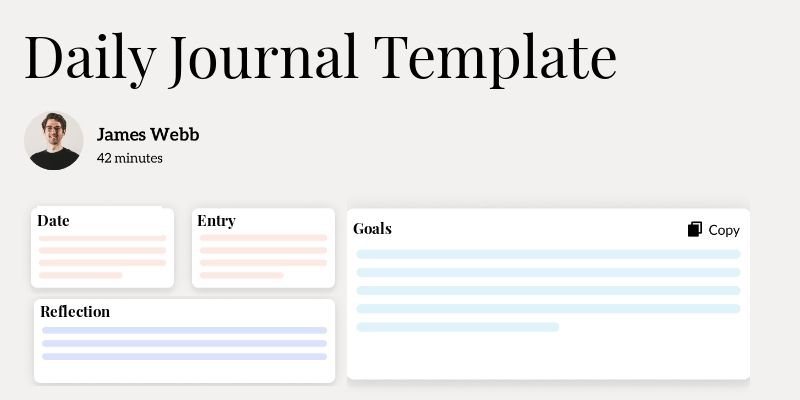
Daily Journal Template
Discover practical Daily Journal Template to enhance your documentation efficiency.
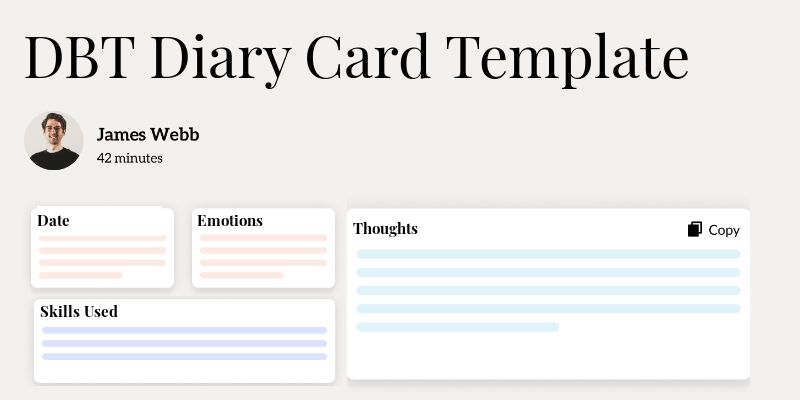
DBT Diary Card Template
Discover practical DBT Diary Card Template templates to enhance your documentation efficiency.

